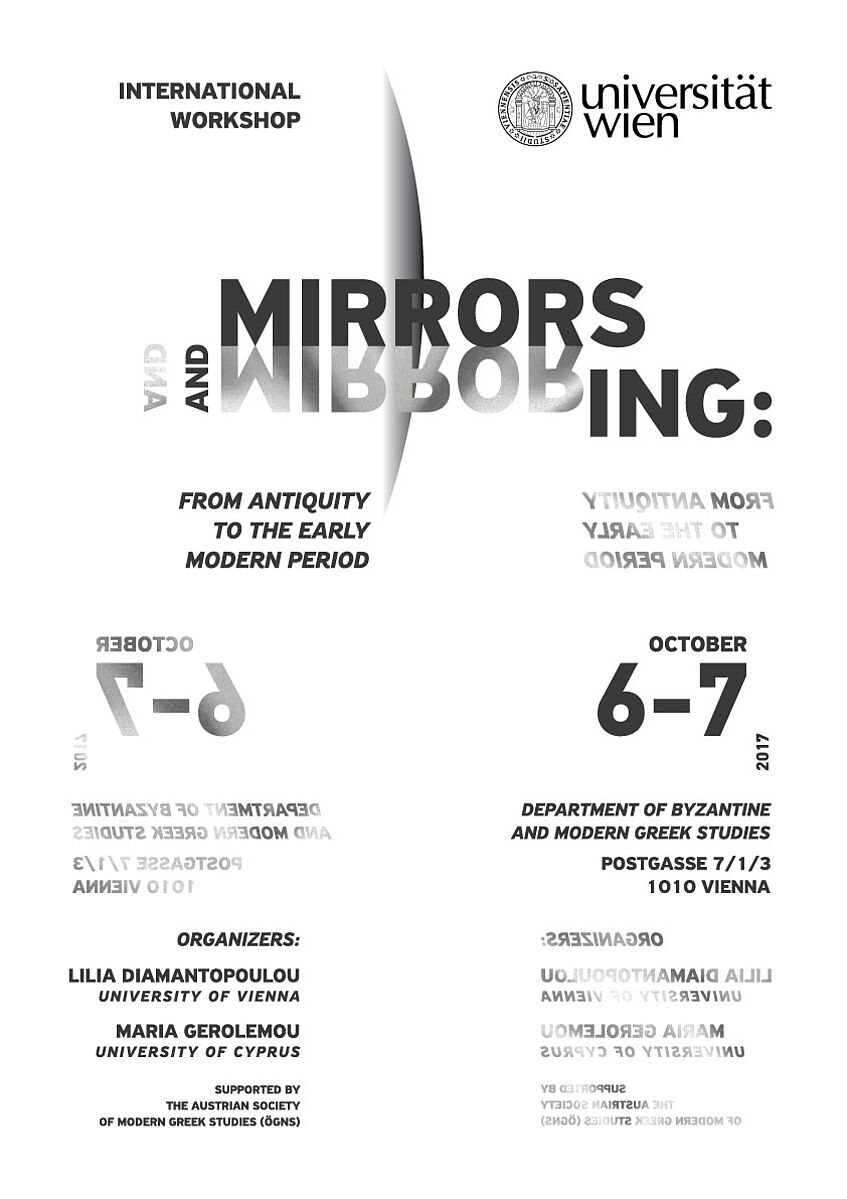Mirrors and Mirroring: From Antiquity to the Early Modern Period

Mirrors and Mirroring: From Antiquity to the Early Modern Period
Mirrors (or reflecting surfaces) and their symbolism have been investigated to a certain degree by scholars who work with representation, duplication and reflexivity. The figure of the mirror as means of reflection of the self (autoscopy), i.e. as means of perceiving, evaluating and knowing the self, or as reflection of the other, as well as in regard to their metaphorical use as agents of transformation, has also received some attention (cf. Frontisi-Ducroux and Vernant 1997; Bartsch 2006, Taylor 2010; Stang 2016).
However, there has been less emphasis on mirrors as artifacts that function as means for conceptualizing reality, as well as on comparative analyses between ancient and modern uses (Anderson 2008). Our focus is on research areas that relate to the concept of mirrors as reflecting media and as material objects, on mirroring as a process of production or reproduction of the physical object (ancient theories of optics in general and of catoptrics in particular), and on reflections as virtual images.
• How does a mirror work? Beside the common visual registration of an action or inaction, in a two dimensional and reversed form, various types of mirrors possess special abilities which can produce a distorted picture of reality, creating illusions and falsehood (speculum fallax); for instance, some mirrors shrink or enlarge their objects, others create three-dimensional copies (concave and convex mirrors). Oracular mirrors and magical mirrors, as well as mirrors revealing the divine will be also taken into consideration. In this vein, mirrors are actually explored as prosthetics that allow us to look where the eye cannot reach (cf. Eco 1983).
• What do we see in a mirror? Mirror images are not thought to be the product of a perspicuous reflection of a physical object. They are the products of the interrelationship between the action of viewing and the reflected object. Contributions on visual process are welcome from both the lens of geometrical optics as well as from a philosophical point of view (cf. Smith 2015, Squire 2016).
The Workshop is supported by the Faculty of Historical and Cultural Studies and the Austrian Society of Modern Greek Studies (ÖGNS).
Poster: © Fotini Paparrodopoulou










